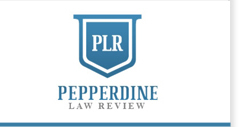First Page
597
Last Page
642
Document Type
Comment
Abstract
From advancing healthcare and education to threatening democratic systems, generative artificial intelligence (AI) has demonstrated a capacity to positively and negatively impact society. And these benefits and consequences are not shared equitably. Copyright law, however, stands as a powerful mechanism in monitoring AI system development. Several complaints have charged generative AI system developers with copyright infringement, alleging that (1) ingesting copyrighted works as training data infringes the copyright owner’s exclusive right to reproduce works in copies and (2) generating AI outputs infringes the exclusive right to prepare derivative works because the outputs are based upon the works on which the models are trained. The system developers argue that the copying is fair use. Fair use is one instrument courts use to achieve the primary goal of copyright law: “To promote the Progress of Science and useful Arts . . . .” Whether courts will hold that ingesting copyrighted works and generating AI outputs qualify as fair use is uncertain. Judicial efficiency and public policy suggest that a Supreme Court decision is inevitable. When choosing how to rule in generative AI cases, the Court must prioritize what is ethically responsible. This Comment urges the Court to consider additional factors in the fair use test for generative AI cases because the current goals of copyright law and the fair use doctrine will not adequately serve the public. That is, in addition to the current test that emphasizes whether the use is transformative, courts ought to consider costs to the public, mitigation efforts, compensation to creators, and ethical and social responsibility. In a landscape where AI can provide conspiracies, release misinformation, and exacerbate biases, the Court must respond swiftly to advance technology while protecting creators and promoting equity.
Recommended Citation
Jacqueline Kessel,
Generating More Equitable Fair Use,
52 Pepp. L. Rev.
597
(2025)
Available at:
https://digitalcommons.pepperdine.edu/plr/vol52/iss3/3

